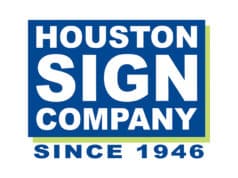
As a business owner, it is the cold hard truth that ultimately the buck stops with you. You may have an employee that creates a negative experience for a customer, for example, but when all the dust settles, it is the business owner that is left to bear the burden of the offense. The plus side of this fact is that as the business owner you can create and implement processes and policies that not only benefit your employees and customers but also protect you and the company you have created.
Safety is a huge concern regardless of industry or focus. Every business owner should be cognizant of what they can do to make both employees and customers feel safe at work and when using their product or service. If the past year has taught us anything it is that safety is a broad topic and means something slightly different to everyone. Therefore, it is especially important that at the minimum business owners follow and comply with regulated safety practices and communicate that fellowship loudly.
Be Thorough And Timely
Compliance issues often come with timelines, deadlines, and renewal dates that as a business owner you cannot be lax on. In some cases, these timelines are in place to not only keep those associated with your company feeling safe, but to keep it up and running as well. The logistics industry is one that is remarkably familiar with this notion because companies with over the road elements have the potential to be exceptionally dangerous.
Issues of compliance are often layered to the point that can be easy to miss something and then fall out of compliance and be forced to put out fires to get business back rolling as usual. Continuing with the logistics example, it is not enough for business owners to know that DOT inspections are required, they must know the various types, the expiration dates, and the qualified professionals that can conduct them. Not following even one of these requirements can cause a break in compliance and a gap in overall safety procedures. Not only are these lapses damaging to your company name and reputation they are also costly to correct.
Build Off What Works
The pandemic forced every business and industry in the world to revamp safety procedures in an unprecedented and uniform way. Regardless of the industry, there were safety terms that had to be implemented across the board. As we shift away from the eye of the COVID-19 storm, this is a good opportunity for business owners to reflect on those pandemic safety measures and continue to implement what works moving forward.
Transparency was another perk to come from the pandemic. Historically, businesses were less open about their processes and procedures to maintain a competitive edge, but now business owners are behaving in almost the exact opposite way. Take advantage of this accessibility and read about safety tips and tricks that other small businesses have tested and evaluate the pros and cons as they may apply to your business’s safety practices. In some cases, business owners are even having open discussions with one another about best practices. Learning firsthand what did and did not work is a great way to grow from experience without the personal or professional risk.
Communicate
It is no longer enough to hand out huge employee manuals during onboarding and trust that your employee has read and understands the materials. Nowadays employees and customers alike want to be assured that your business views safety and compliance as an ongoing crusade rather than a one-time item to be checked off a list. Some ways that you can be sure that you are communicating your dedication effectively are intermittent safety training sessions, revamped public mission statements and professional dedications, and tangible safety items in your workspaces and storefronts.
Working for and patronizing a company traditionally were simply about the product or service provided, or in the case of the employee, the paycheck earned. That is quite different now as people are also paying attention to the feeling associated with a business. Safety and security are at the top of that list. Leaving no room for interpretation on how your business views safety is going to generate trust and security within your team and customers that is going to fuel their overall loyalty and patronage.








